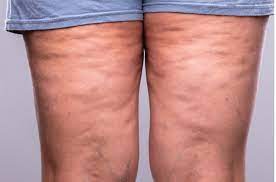
Diet and Lifestyle Changes for Lipedema Management
Lipedema, a chronic medical condition affecting the distribution of fat beneath the skin, often causes discomfort, swelling, and pain, particularly in the legs, thighs, and arms. While it primarily affects women, the condition is frequently misunderstood and misdiagnosed. Research has indicated that targeted dietary adjustments and lifestyle changes can play a key role in managing symptoms of Lipedema.
This post explores effective approaches to support individuals living with lipedema by examining how diet and lifestyle shifts can make a measurable difference.
Understanding the Role of Diet in Lipedema
Dietary changes can significantly lessen the severity of lipedema symptoms. While no one-size-fits-all diet exists, certain principles have proven helpful for many individuals with the condition:
Reduce Processed Foods and Sugar
Highly processed foods and added sugars have been linked to increased inflammation in the body. For individuals with lipedema, minimizing the intake of sugary drinks, desserts, and processed snacks may help reduce tissue inflammation, which is a key contributor to pain and swelling.
Emphasize Anti-Inflammatory Foods
Anti-inflammatory diets rich in whole foods, such as leafy greens, fatty fish, nuts, seeds, and olive oil, may soothe symptoms by reducing swelling and promoting lymphatic flow. These foods provide essential nutrients that support overall health while helping manage inflammation.
Focus on Low-Carb or Keto Approaches
Some researchers suggest that low-carb or ketogenic approaches may be beneficial for individuals with lipedema. These diets focus on reducing carbohydrate intake while emphasizing healthy fats, which some studies suggest can limit fat accumulation associated with the condition.
The Importance of Lifestyle Adjustments
While dietary changes are crucial, adopting a healthier lifestyle is equally impactful in managing lipedema. These lifestyle strategies offer sustainable, long-term benefits:
Incorporate Regular Low-Impact Exercise
Exercise improves lymphatic fluid flow, reduces swelling, and promotes overall well-being. Low-impact exercises, such as swimming, walking, and yoga, can be particularly beneficial for individuals with lipedema, as they are gentle on joints and supportive of circulation.
Practice Lymphatic Stimulation Techniques
Techniques such as manual lymphatic drainage (MLD) and compression therapy can help improve lymphatic fluid mobility and reduce heaviness in affected areas. Consulting with a specialist can customize these strategies to suit individual needs.
Prioritize Stress Reduction
Chronic stress worsens inflammatory processes. Incorporating mindfulness practices, meditation, and stress-reducing activities supports both mental and physical well-being while aiding in symptom management.
Take Charge of Lipedema with Sustainable Choices
Managing lipedema calls for a well-rounded approach that combines dietary changes, regular exercise, and effective self-care practices. While lipedema remains a lifelong condition, these strategies empower individuals to take control of their health and improve their quality of life.